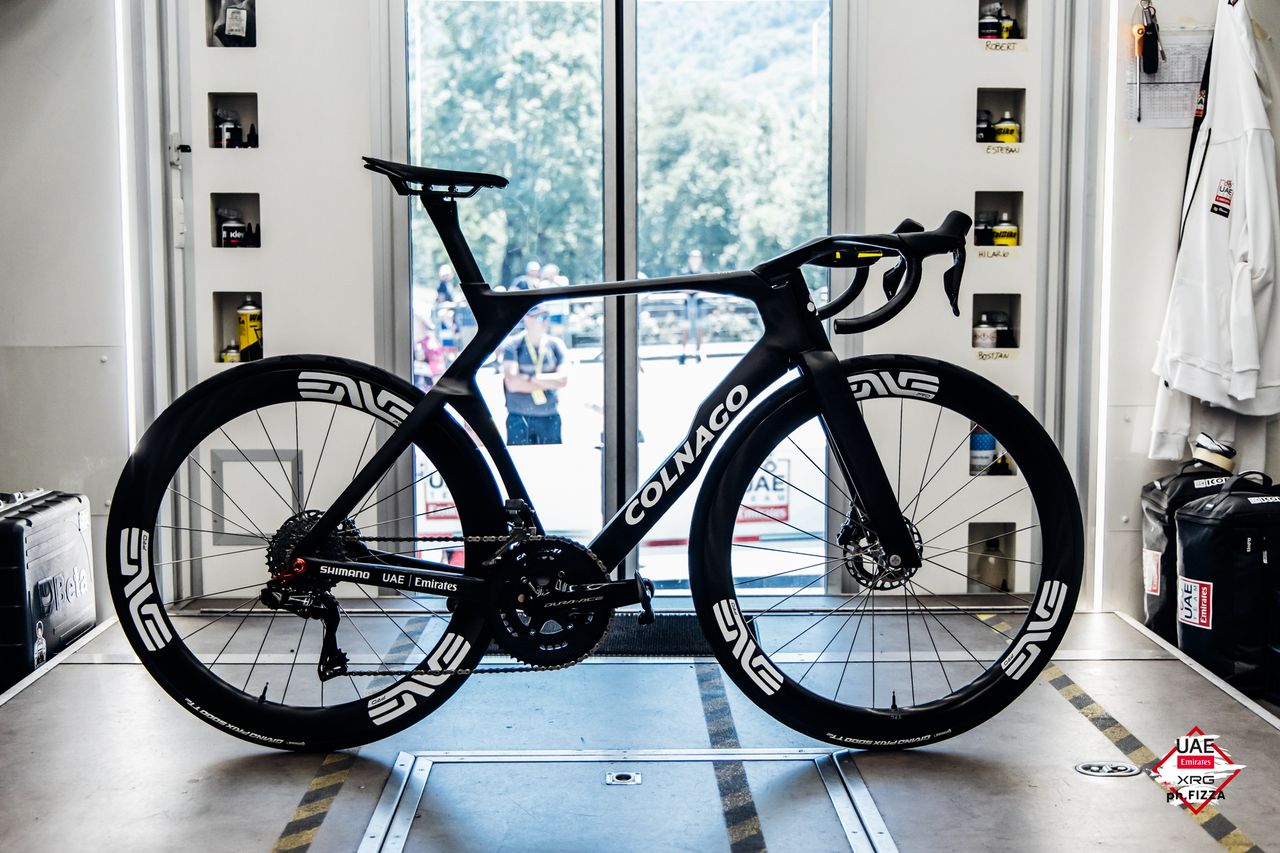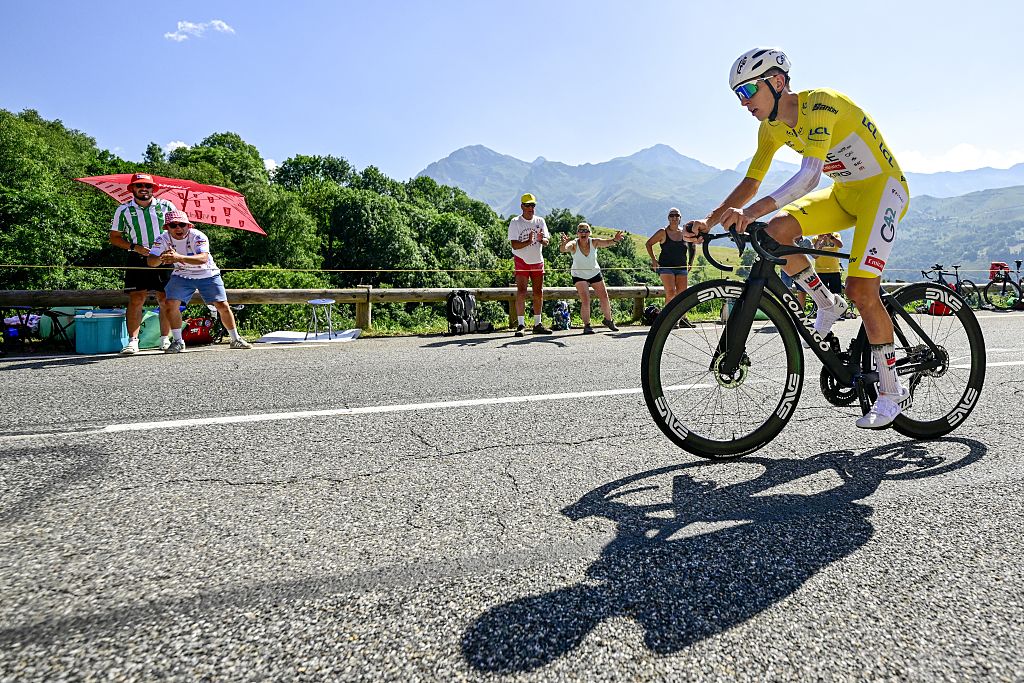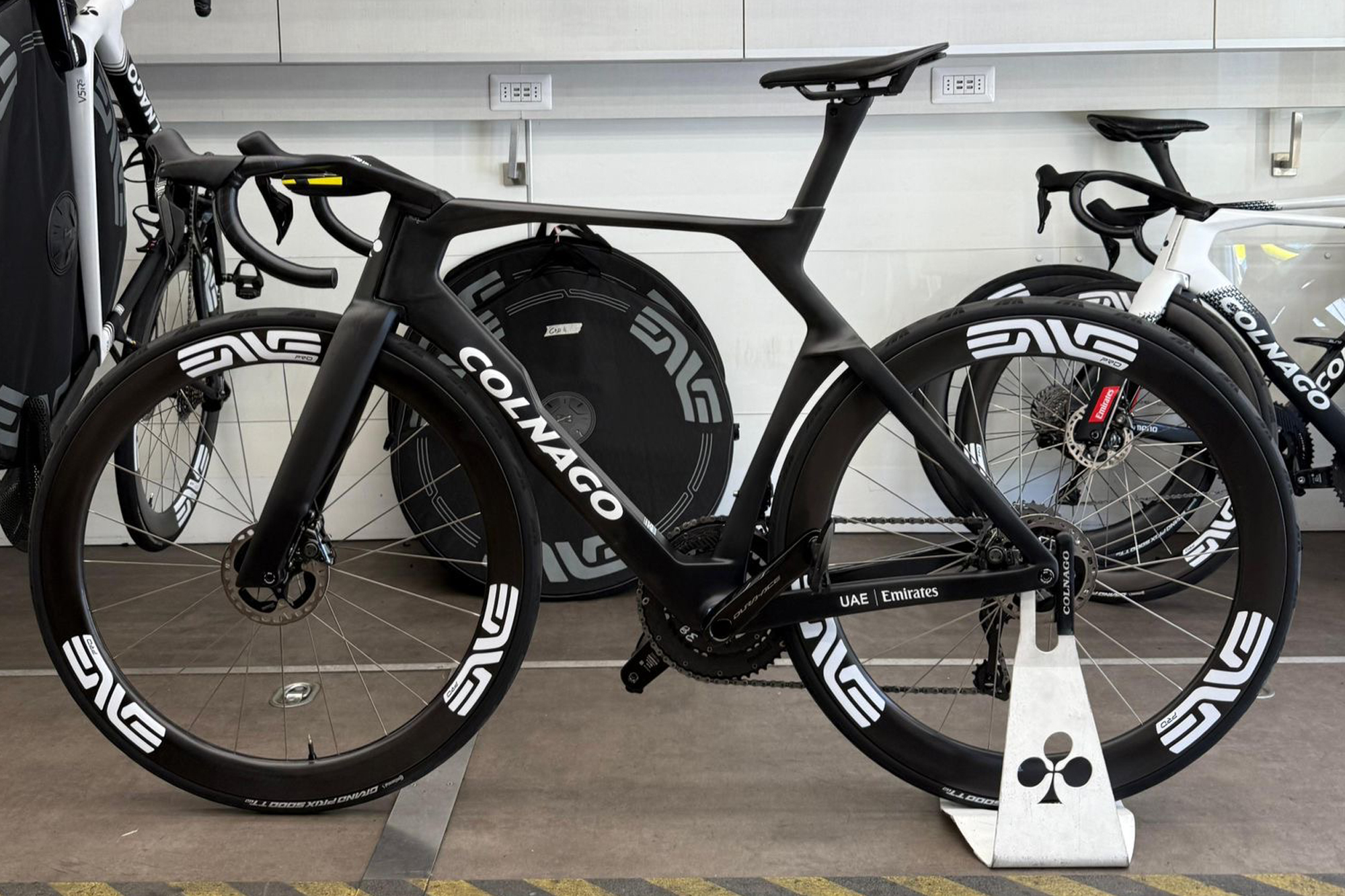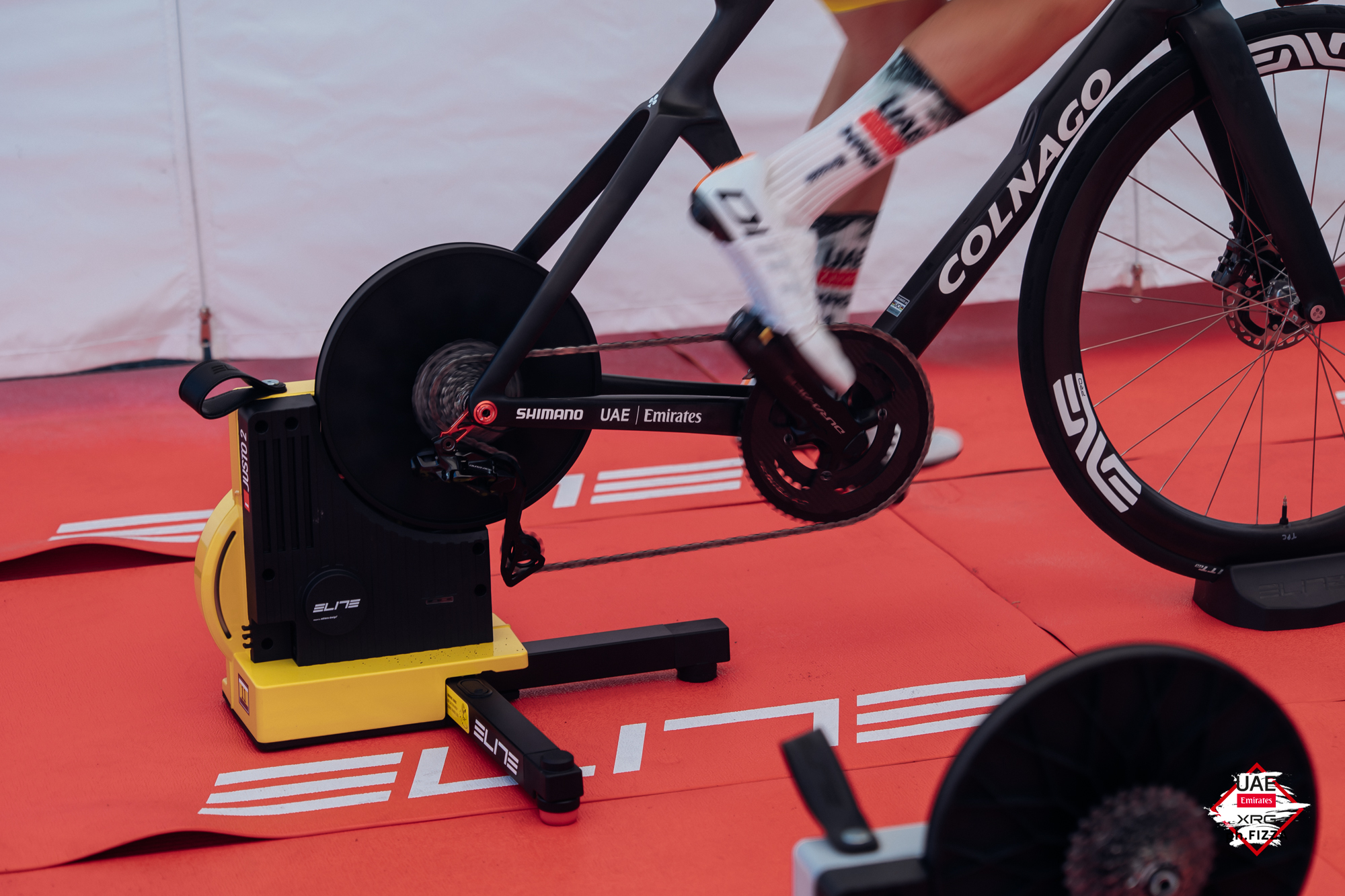
Friday's stage 13 mountain time trial of the 2025 Tour de France was smashed by Tadej Pogačar. It was an exhibition of technology, with lightweight climbing rigs, Frankenstein TT conversions, and helmet and skinsuit experimentation taking centre stage.
A mountain TT poses loads of questions for equipment directors. The TT bike is made for TTs, but with an impressive and incessant incline in play, weight is a factor, which is why so many riders opted for climbing bikes.

Only a brave rider would take the heavier bike, surely?
Well, not quite. Some aren’t that heavy in full aero trim. Remco Evenepoel (Soudal Quick-Step) gambled on the aero credentials of his Specialized Shiv paired with shallow wheels. The Shiv's relatively low weight makes those calculations easier, compared to, say, UAE Team Emirates-XRG’s Colnago TT1, which is, by comparison, a heavier bike.
At average race speeds of 26km/h, weight trumps aerodynamics; however, as speeds increase, the CdA of the aerodynamic frames starts to edge ahead, increasing exponentially with speed. A bike that’s 300g lighter at 42km/h doesn’t have the advantage it did at 26km/h.
With a choice of a full-fat TT bike, an aero-ish Colnago Y1RS, and the much lighter V5RS, Pogačar is spoiled for choice when it comes to equipment, but it’s not straightforward. The Slovenian's strategy was to opt for the middle ground, with the Colnago Y1RS, but at some 400g heavier than the V5RS, he needed to put it on a diet.

White paint is one of the heaviest finishes, primarily due to the build required to make it opaque. Add in some world champs stripes underneath, and it’s potentially the heaviest paint job in the WorldTour.
Removing the bar tape and bottle cages, ditching the 160mm rotors for 140mm items, and swapping out his regular Fizik Argo Adaptive saddle for a lightweight Transiro Aeris are just some of the tricks his mechanics used to trim weight from the bike – but these tweaks are good for 100-150g at most. One of the most significant ways to drop weight quickly is to remove excess paint from the frame – something that can shed upwards of 300g.
Manufacturers generally underquote their estimates of paint weight. After all, it depends on factors such as humidity, coverage, surface imperfections, and sheer amount of paint applied in multi-colour jobs.

According to Alistair McLean of Fatcreations Custom Paint, a significant amount of weight can be saved by sanding a frame down to bare carbon and applying minimal graphics and paint.
"Most of the time, when a special-edition paint scheme is applied to a frame, the painter usually scuffs the original paint up (this doesn't remove much weight) and then applies the new paint on top. If it's white, you're looking at the 150g mark. So if you've got 150g of extra paint on and another 150g of the original paint on there, you can easily be removing 300g worth of paint on a special World Championship-edition Colnago Y1Rs like Pogačar."
McLean reckons that UAE Team Emirates-XRG would have saved around 280g.
"If you've got a really good painter and they are prepared to put in the hours, they can do a very good minimal paint job, this will be around 20g, so I suspect a 280g saving."
All things tallied up or down depending on how you look at it, all these tweaks, including the naked frame, bring the weight of the Y1RS crashing down to somewhere indiscernibly close to the V5RS and right on the UCI weight limit – 6.89kg to be precise, giving Tadej the best of both worlds.
Whether that accounted for his 34-second lead over second-place Jonas Vingegaard is a moot point. Pogačar smashed it, again.







